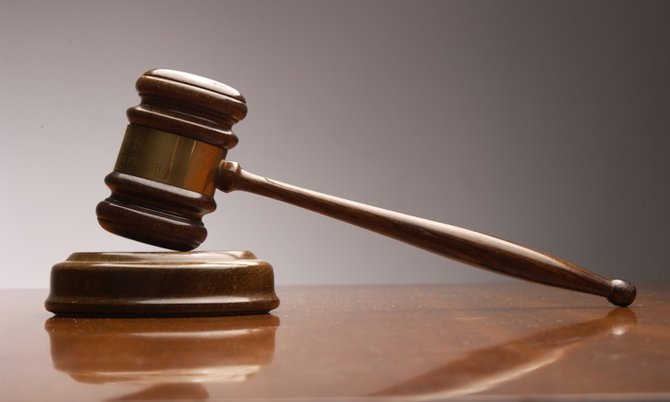By NICO SCAVELLA
Tribune Staff Reporter
nscavella@tribunemedia.net
A MAN has had his murder conviction overturned after Court of Appeal judges found a dying man’s declaration that the accused had shot him was weak evidence.
The Court of Appeal quashed Jermaine Missick’s conviction and 35-year sentence concerning Marcus Miller’s death at Gibson’s Bar in 2014.
The reason for doing so, the appellate judges said, was because while there was evidence against Missick, it was of a “tenuous” nature.
This, they said, was evident in Miller, in his dying declaration, telling police officers Missick and another man shot him, though the evidence was that he was only shot once.
The appellate judges further found that the circumstances of the incident mitigated against the accuracy of Miller’s identification of Missick as the one, or one of the persons who killed him.
According to the ruling, on 6 January 2014, Miller was shot to the face at the rear of Gibson’s Bar located on Carmichael Road, next to Checker’s Café. With the assistance of friends who were present at the time of the incident, Miller was subsequently transported to the hospital.
Later that evening he was visited by his father, Marcus Miller Sr, who asked him if he knew who shot him. Miller replied: “A man named Blue shoot me.” The reference to “Blue” was to Missick’s co-accused, Garvin Adderley. In his written statement, Miller said sometime around 8pm on the date in question, he left his residence and went to Gibson’s Bar. Present at the bar were a number of his friends with whom he socialised that evening. While there, Adderley approached Miller and told him to leave the bar because he was talking too loud. Miller said he knew Adderley to be troublesome and so he walked away and leaned on a friend’s truck.
Adderley followed Miller however, and placed his hand in Miller’s face while continuing to argue with him. Miller again walked away and sat on a stool, only to be confronted a third time by Adderley who continued to argue with him. Miller said he refused to answer Adderley because he knew he was looking for a reason to fight him.
Miller said while that was happening, his friend Orlyn Young showed up and managed to calm Adderley down. A short while later, Adderley left the scene with another male in a silver Suzuki Swift.
Miller, meanwhile, remained at the bar with several of his friends, eating at the rear of the establishment. While doing so, he said he heard a bang that sounded like a gun went off. He tried to run away because of how close it sounded, but realised that he could not move. He instead fell to the ground.
Miller said when he lifted his head, he saw Adderley holding a handgun in his hand. He said he also saw Missick, who he referred to as “Bats” with a black and silver shotgun advancing towards him.
Miller said he became afraid and played possum. He was later taken to the hospital.
In his statement, Miller provided the police with the physical descriptions of Adderley as well as Missick. Four other witnesses also provided statements to the police, however, none of them were able to identify any of the shooters, although at least one of them knew Missick prior to that evening.
The following day, Miller was visited by two police officers, one from the Central Detective Unit (CDU), who recorded a written statement from him. At the time, Miller told the officers that Missick and Adderley were responsible for his injuries.
Miller died days later on January 14, 2014. The day he died, his brother Tyrone Miller was with him when he was visited by two police officers. One of the officers asked Miller: “So it was Bats and Blue who shot you?”
In response, Miller replied: “Yes sir.”
At the trial, Missick never denied knowing Miller, or that he answered to the alias “Bats”. Furthermore, in his record of interview, he admitted to getting in a physical fight with Miller in 2012. This admission was never challenged by defence counsel at the trial.
Missick was sentenced to 35 years in December 2017. However, the appellate judges said the trial should have ended at the no-case submission stage, due to the “tenuous” nature of the evidence.
“The issue of how the judge treated Miller’s written statement and his reply to the police officer’s question is not without difficulty because the reply is inconsistent with the evidence relating to the shooting,” the appellate judges said. “The evidence adduced by the Crown suggests Miller was shot only once. So both (Missick and Adderley) could not have shot him. This apparent error is at odds with the rationale for the admission of dying declarations, that is, they are likely to be true; and should have given the judge pause before allowing the Crown to rely upon it. This was perhaps a case where the judge ought to have exercised his judicial discretion to exclude this statement as unreliable.”
The appellate judges added: “This was a case where there was evidence against the appellant but it was of a tenuous nature. The quality of the identifying evidence was not good. Miller’s evidence had to be examined in view of all of the circumstances surrounding the event and those circumstances militated against the accuracy of his identification. His evidence could not rise to the level of support of the Crown’s case against the appellant. At the close of the Crown’s case there was insufficient admissible evidence disclosed for the appellant to be called upon to present a case. The judge ought to have acceded to the submission of no case to answer.”
Thus, the appellate judges set aside Missick’s sentence, and made no order for a re-trial.
Attorney Nathan Smith represented Missick on appeal.





Commenting has been disabled for this item.